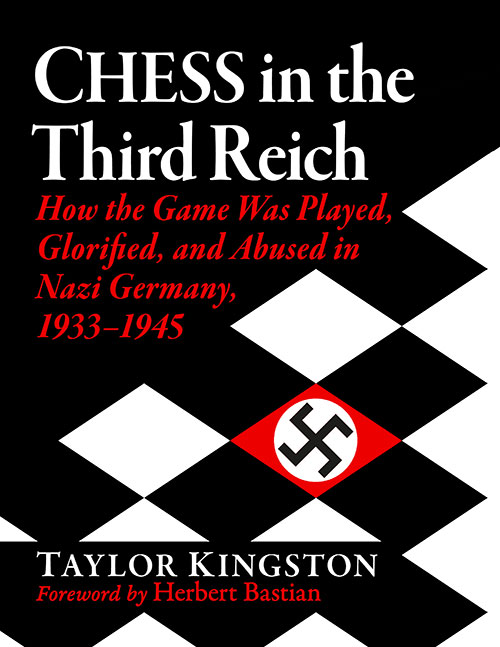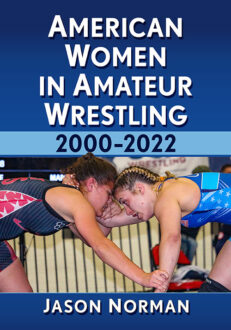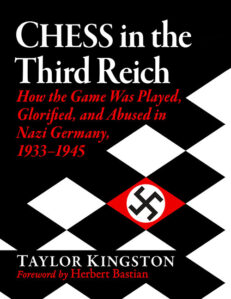Chess in the Third Reich
How the Game Was Played, Glorified, and Abused in Nazi Germany, 1933–1945
$49.95
In stock
About the Book
The USSR is famous as the first totalitarian state to promote chess. Less well known is that Nazi Germany was the second. The Third Reich gave chess a tremendous financial and propaganda boost in hopes of making Germany a dominant chess power. Yet this aspect of the Nazi era has received scant attention in later German literature, and even less in English. This book fills that gap.
Using a multitude of German sources, the author has crafted a narrative showing how the Nazis completely remade German chess into a monolithic structure to showcase the supposed cultural and intellectual superiority of the “master race.” Many games by German masters are presented—Bogoljubow, Richter, Sämisch, Rellstab, Kieninger, Junge, and more—and by others who came under Nazi rule: Alekhine, Keres, Eliskases, et al. Important political figures are featured: Otto Zander, Erhardt Post, Hans Schemm, Josef Goebbels, and especially Hans Frank. Politics affecting chess are detailed, both external (e.g., the annexations of Austria and Czechoslovakia) and internal (rivalry between the Grossdeutscher Schachbund and Kraft durch Freude), as of course are the effects of the war and persecution of Jews.
About the Author(s)
Bibliographic Details
Taylor Kingston
Format: softcover (8.5 x 11)
Pages: 291
Bibliographic Info: 98 photos, appendix, notes, bibliography, indexes
Copyright Date: 2025
pISBN: 978-1-4766-9260-9
eISBN: 978-1-4766-5141-5
Imprint: McFarland
Table of Contents
Preface 1
Foreword by Herbert Bastian 3
Analytical Methodology and Technical Details 4
Frequently Used Abbreviations, Acronyms and Chess Terms 5
Annotation Symbols 6
Chapter I—Germans in Chess: A Proud Heritage 7
Chess in Europe Up to the Mid–19th Century 7
1851: German Ascendancy Begins 7
1871–1894: Germany and German Chess Are Unified 10
The Effects of World War I 10
Chapter II—Chess in the Weimar Republic, 1918–1932 13
Political Parties and Chess Organizations in the 1920s 13
High-Level German Chess in the 1920s 14
The Last Years of Freedom, 1930–1932 18
Chapter III—Chess in the Third Reich, the Early Years 22
1933–1934: The Nazis Take Over 22
Gleichschaltung: First Steps 22
German Chess and Anti–Semitism in the Third Reich 26
GSB Promotional Efforts in 1933–34 29
Chess and Politics in the USSR 1923–1934 30
Bad Pyrmont 1933 and After: Gleichschaltung in Full 31
The GSB and FIDE 32
Reorganization of the National Championship 33
The Blood Purge 38
The Dolfuss Assassination and Failed Austrian Coup 39
Alekhine–Bogoljubow II 40
The Bundesform Pieces 42
Bad Niendorf 1934 Tournament 43
Two Important Deaths 43
1935: Rearmament, Re-Zoning, Olympic Preparation, a New Champion 44
German Politics in 1935 44
German Chess in 1935 45
Germany Prepares for Two Olympiads 48
A New World Champion 57
Chapter IV—The Ominous and (Almost) Glorious Year of 1936 59
On the Geopolitical Front 59
1936 in German Chess 60
Sämisch’s Blindfold Exhibition 61
Richter’s Rigorous Labors 63
Moscow 1936 International Tournament 65
Olympic Training Events 66
The Final Olympic Team Selections 77
The Jewish Question: To Play or Not to Play? 77
August 1936: The Olympiad Begins 78
Federation Business at Munich 91
The Rest of 1936 92
Chapter V—The “Unsurprising” Year 1937 94
On the Geopolitical Front 94
German Chess in 1937 94
Political Friction: The GSB in Conflict with the KdF 95
The Demise of the KJV 97
Germany and FIDE in 1937 97
Major German Tournaments of 1937 97
Euwe Visits Germany 108
Germans on the International Scene 111
Chapter VI—The Momentous Events of 1938 113
The Anschluss of Austria 113
Trouble Again with Kraft durch Freude 117
The Death of Otto Zander 119
German and International Chess through September 1938 120
Appeasement at Munich: the Dismemberment of Czechoslovakia 128
The Chess Variant Wehrschach 130
Kristallnacht 133
Chapter VII—1939: Annexation, Consolidation, Aggression, and Amputation 134
On the International Front 134
German Chess through July 1939 134
The Eliskases–Bogoljubow Match 134
Changes to the National Championship 139
Choosing and Transporting the Olympic Teams 143
The Mieses–Lasker Exchange 145
The Nazi–Soviet Non-Aggression Pact 145
The 1939 FIDE Olympiad Begins 146
Germany Invades Poland, World War II Begins 149
Immediate Effects on the Olympiad 150
A Hollow Victory 151
Attempted Coup in the General Assembly 157
In the Aftermath of the Olympiad 159
Military Developments in Late 1939 161
Chapter VIII—1940: Sitzkrieg, Blitzkrieg, Alekhine Occupied, KdF Active and Hans Frank Ascendant 163
Germany Attacks in the West 163
Alekhine’s Anguish 164
GSB Chess in 1940 165
GSB Wertungsturniere and Kriegsmeisterschaft 165
Willi Schlage Memorial 168
Kraft durch Freude Chess in 1940 168
Schach-Echo Magazine 169
Schach ist schön, Schach bringt Freude! 173
KdF Master Tournaments 174
Hans Frank’s First Steps Toward Empire 176
Racial Cleansing of the Lehrbuch des Schachspiels 180
Chapter IX—1941–1942: The Alekhine–Frank Collaboration 183
An Intellectual Gangster’s Vision 183
Alekhine’s Two-Pronged Strategy 184
Teyssou’s Additional Factor 187
Germany Invades Russia 188
Munich 1941 Europa Tournament and the Incipient Europaschachbund 192
Alekhine’s New Arrangement 202
Salzburg 1942 and the Official Founding of the Europaschachbund 203
1942 GSB Championship 206
Munich 1942: The Europaschachbund and Europameisterschaft 208
Paul Keres, a Pawn in Limbo 212
A Keres–Alekhine World Championship Match? 214
Goebbels Throws a Fit, but Hans Frank Carries On 214
Diemer, Dyckhoff and Post on Klaus Junge 216
The Military Situation in the Latter Half of 1942 221
The Prague Tournament, December 1942 222
KdF Activity in 1942 224
Chapter X—1943: The Beginning of the End 225
Surrender at Stalingrad 225
Demise of the Deutsche Schachblätter 225
The Effects of Bombing on German Chess 226
GSB Headquarters Bombed 230
Alekhine in 1943 230
Hans Frank’s Fading Fiefdom 235
Scraping the Bottom of the Barrel 236
Kraft durch Freude Expands Its Influence 239
Europaschachbund Events 244
The Military Situation at the End of 1943 245
Chapter XI—1944: Shutting Down 246
Grossdeutscher Schachbund Activity 246
Frank’s Flight from Reality 251
Kraft durch Freude’s Last Reichsschachturnier 253
The Deutsche Schachzeitung and Frank Call It Quits 254
Chapter XII—1945: Aftermath, Epitaphs and Evaluation 256
Final Defeat and Its Aftermath 256
Epitaphs 257
Chess in the Third Reich: A Final Evaluation 258
Appendix: Munich 1936 Olympiad Round-by-Round Results and Standings 263
Chapter Notes 267
Bibliography 275
Indexes:
Index of Players (to game numbers) 277
Index of Openings by Name
(to game numbers) 278
Index of Openings by ECO Code (to game numbers) 279
General Index (to page numbers) 280<BR





